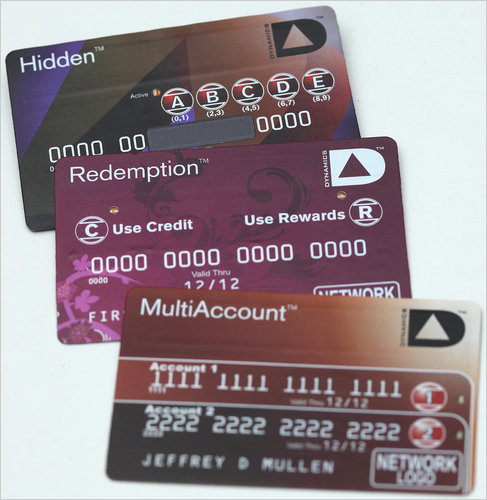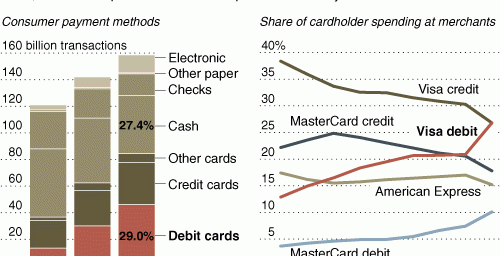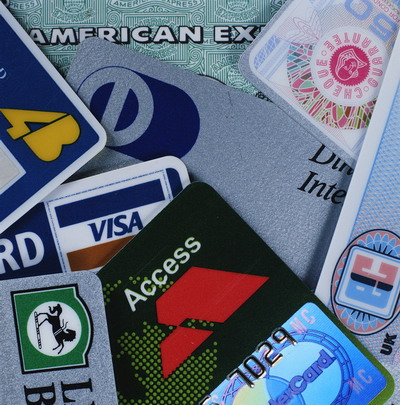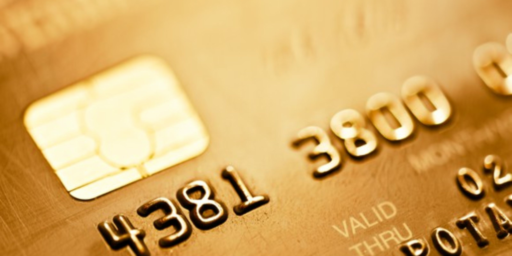Credit Cards Going High Tech
New multifunction credit cards will soon change the way Americans handle simple transactions.
Interesting news from NYT: “Credit Cards Soon to Get a Makeover“
Next month, Citibank will begin testing a card that has two buttons and tiny lights that allow users to choose at the register whether they want to pay with rewards points or credit, at most any merchant they please.
Other card issuers are testing more newfangled cards, including some that can double as credit and debit cards, and cards with fraud protections baked right into the plastic. One, for instance, shows a portion of the account number only after the cardholder enters a PIN.
The microscopic engine powering the plastic will help breathe new life into a 1950s-era technology — the black magnetic stripe found on the back of the 1.8 billion credit and debit cards circulating in the United States. Much of the world has already moved to using more advanced cards, like the ones in Europe that require a PIN and use a chip instead of a magnetic strip.
Even with the innovations, no one knows how long plastic cards will reign. They may eventually be rendered obsolete by technologies that will transform consumers’ cellphones into virtual wallets, and a large number of companies, including Visa, MasterCard and Apple, are developing these. But several card analysts say it will probably take a while before any one technology standard becomes available across all phones and merchants.
Indeed, one would think cash would have been rendered obsolete long ago but we still have it. Hell, we can’t even manage to get rid of the penny, which has been useless for decades.
It is amusing, however, how far behind the United States is in adopting new technologies. This, despite our self-image as the planet’s most advanced society. We’re years behind the Europeans on such things as cellular, broadband, credit cards, counterfeit-proof currencies, and a myriad of daily use technologies. Presumably, this is largely a function of their greater population density and ability to dictate a single technological “winner.”







I’m definitely looking forward to the “cell phone payment” thing. It seems like it would almost naturally flow from the current technology – just purchase a “Visa App” from your bank, and then at the register you either link your phone to the payment screen by USB port, or by some sort of touch-contact between your phone and the payment system. We already have Mobile Banking, so it’s not that much of a stretch.
Our banks spend their innovation in the fine print.
As someone who has worked with the US Bureau of Engraving and Printing (10 years ago), and specifically discussed anti-counterfeiting measures with them, I can say you are off base when it comes to that category. US currency is extremely difficult to counterfeit well. It may be the most difficult in the world, for a variety of reasons. Some people think the fact that we don’t have bright, multi-colored money makes it easy to duplicate, but that is not the case at all. It is easier to spot an off color when there is only two on the bill (green and black – well, there’s a little red now too) than when there is an explosion of color. But more importantly, the type of printing press we use leaves a distinctive feel to our currency. These intaglio presses are a larger, higher speed version of the type used for fine business cards and wedding invitations, but don’t lend themselves to multiple colors. To be honest, I don’t know how they are adding the other color in, because I haven’t been inside since they started doing that And don’t get me started about the paper. It is made by one company in a very unusual fashion, one that is done on unique equipment. The same company has has been making currency paper since before there was a United States and while the rest of the paper manufacturing trade has adapted their paper to the technology, this company (Crane) has done the opposite for 200+ years – adapted the technology to their paper. It ends up with a paper that is not quite like anything else out there.
The “virtual wallet” concept is what we need. The rest are just efforts to continue to spruce up the proverbial buggy whip.
A PayPal-style system tied to user-authentication on his/her own smartphone would be nice. The brilliance of PayPal and the like is that the customer’s account numbers never enter the hands of the merchant.